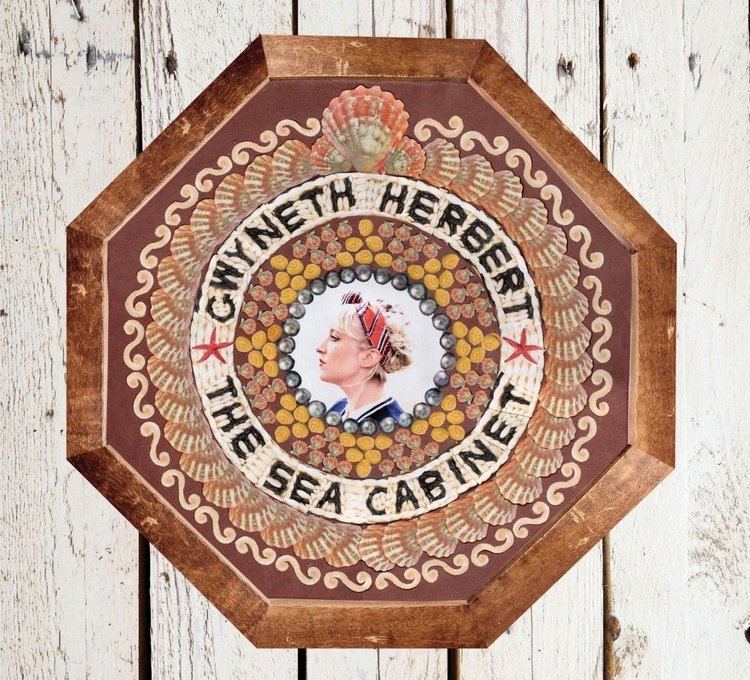Released 20 May 2013 (UK) Genres Jazz, Song cycle | Length 51:13 Release date 20 May 2013 Label Monkeywood Records | |
 | ||
Studio Britten Studio, Aldeburgh Music, Suffolk Similar All the Ghosts, Between Me and the Wardrobe, Bittersweet and Blue, First Songs, Ten Lives | ||
Gwyneth herbert sea theme
The Sea Cabinet, the sixth album by British singer-songwriter Gwyneth Herbert, was released on 20 May 2013. It takes the form of a song cycle and was critically acclaimed, receiving four-starred reviews in The Financial Times and The Independent and a 4.5-starred review in All About Jazz.
Contents
History
In January 2010, Gwyneth Herbert was commissioned by Snape Maltings in Suffolk as artist in residence to write, record and perform a new body of work based on stories of the sea. This was performed in October 2010 at Snape Maltings.
Production and release
An album of this music, The Sea Cabinet, was produced by Gwyneth Herbert and Dave Price. It was recorded and engineered by Robert Harder at Britten Studio at Aldeburgh Music, Suffolk, with additional recording and engineering by Robert Harder at Satellite Studios and by Dave Price at the Old Locker Room. The album was mixed by Robert Harder, Gwyneth Herbert and Dave Price and was mastered by Robert Harder. The album's cover artwork was by Sarah Jones, with photography by Rosie Reed Gold.
The album, financed through a crowd-funding initiative, was released on Herbert's own Monkeywood label in May 2013 and launched in a series of concerts from 23 to 26 May at Wilton's Music Hall in London's East End.
Songs
The album takes the form of a song cycle and a storyline which Herbert describes as follows: "Every day, a woman walks the beach alone, obsessively collecting every discarded and washed up object that she finds. She takes them home to catalogue each one with the care and rigour of a scientist. The artefacts are then placed in 'The Sea Cabinet', and every one sings with the memory of a secret sea-set story – the victory of a Fishguard cobbler's wife, a jaded seaside hotel, a sunken chapel, the shifting sands of wartime Alderney, the dangerous allure of the King's Shilling, the loves and the losses and the stars and the whores and the drink and the drowning and the drip, drip, drip..."
A new version of Herbert's "Lorelei" is included on the album; this song also featured on her previous albums Ten Lives and All the Ghosts.
In her song "Alderney", Herbert tells the story of the sudden evacuation of the inhabitants of Alderney, one of the Channel Islands, in the Second World War. She sings about the irrevocable changes introduced during the Nazi occupation of the island and their effect on the islanders.
In a metaphor for an eroded love affair, "I Still Hear the Bells", co-written by Gwyneth Herbert and Fiona Bevan, refers to the "drowned" Suffolk village of Dunwich which was severely flooded in the 13th century. A popular local legend says that, at certain tides, church bells can still be heard from beneath the waves.
Instead of the usual two or three seconds of silence between tracks, Herbert inserts the sound of her walking across the stones at Aldeburgh.
Reception
David Honigmann, in a four-starred review for the Financial Times, called it "a concept album about the debt British history owes to the sea". Holly Williams, in a four-starred review for The Independent, described it as a "cabinet of curiosities" with "a cabaret approach to storytelling, in rollicking sea shanties and waltzes", and "inventive" instrumentation "featuring wheezing accordions, warbling woodwind, tinkling music boxes and rolling bells". Andrew Clarke, writing in the East Anglian Daily Times, described the album's "collection of unusual percussive bells, bottles and ringing sounds" as "rather reminiscent of Benjamin Britten’s slung mugs in Noyes Fludde".
John Eyles, in a 4.5-starred review for All About Jazz, praised its "consistency and unity of sound and tone" and the fact that several of the songs "could be taken for traditional folk songs rather than new compositions". Piers Ford, writing in The Art of the Torch Singer, described the album as "Haunted and haunting. Poignant and achingly beautiful. Ribald and raunchy. Evocative and nostalgic...In its lovingly-produced completeness, this album is a work of art". Writing in Metro, Robert Shore called it a "wildly inventive concept album" and praised Herbert's "beguiling wit that's as evident in her imaginative arrangements as it is in her lyrics". His Metro colleague Alex Macpherson described it as "an ambitious but grounded work" that showed Herbert "at the peak of her creative powers".
Personnel
On this album, Herbert shares vocals with singer-songwriter and guitarist Fiona Bevan, who also co-wrote two of the songs. She is backed by her regular band – Dave Price, Al Cherry and Sam Burgess – and is joined Harry Bird and Christophe Capewell from The Rubber Wellies.
Songs
1Sea Theme2:13
2The Regal3:20
3Sweeter3:49
